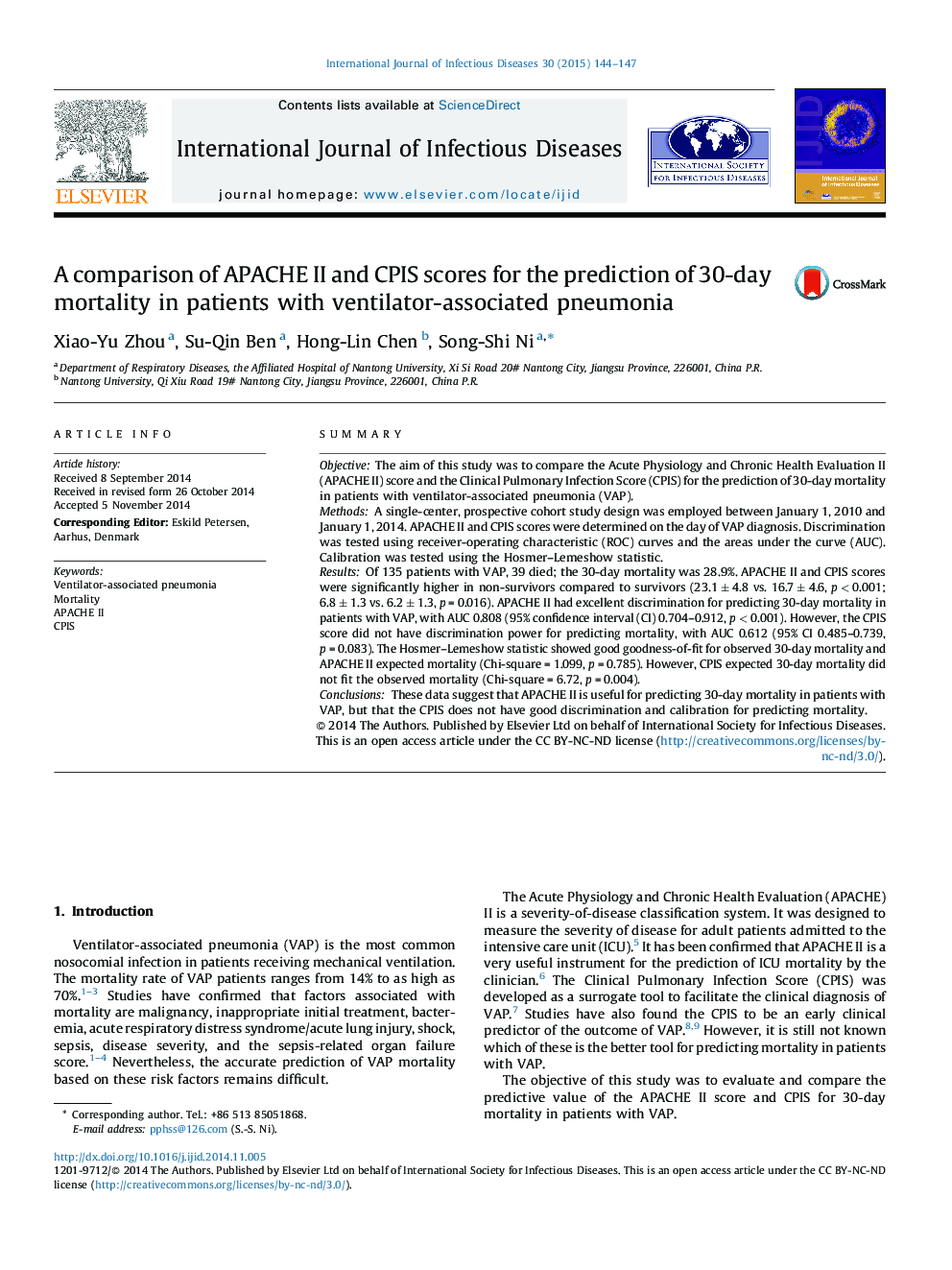| Article ID | Journal | Published Year | Pages | File Type |
|---|---|---|---|---|
| 3362291 | International Journal of Infectious Diseases | 2015 | 4 Pages |
•APACHE II was useful in predicting 30-day mortality in patients with ventilator-associated pneumonia (VAP) compared with CPIS.•The CPIS did not have good discrimination and calibration for predicting 30-day mortality in patients with VAP.
SummaryObjectiveThe aim of this study was to compare the Acute Physiology and Chronic Health Evaluation II (APACHE II) score and the Clinical Pulmonary Infection Score (CPIS) for the prediction of 30-day mortality in patients with ventilator-associated pneumonia (VAP).MethodsA single-center, prospective cohort study design was employed between January 1, 2010 and January 1, 2014. APACHE II and CPIS scores were determined on the day of VAP diagnosis. Discrimination was tested using receiver-operating characteristic (ROC) curves and the areas under the curve (AUC). Calibration was tested using the Hosmer–Lemeshow statistic.ResultsOf 135 patients with VAP, 39 died; the 30-day mortality was 28.9%. APACHE II and CPIS scores were significantly higher in non-survivors compared to survivors (23.1 ± 4.8 vs. 16.7 ± 4.6, p < 0.001; 6.8 ± 1.3 vs. 6.2 ± 1.3, p = 0.016). APACHE II had excellent discrimination for predicting 30-day mortality in patients with VAP, with AUC 0.808 (95% confidence interval (CI) 0.704–0.912, p < 0.001). However, the CPIS score did not have discrimination power for predicting mortality, with AUC 0.612 (95% CI 0.485–0.739, p = 0.083). The Hosmer–Lemeshow statistic showed good goodness-of-fit for observed 30-day mortality and APACHE II expected mortality (Chi-square = 1.099, p = 0.785). However, CPIS expected 30-day mortality did not fit the observed mortality (Chi-square = 6.72, p = 0.004).ConclusionsThese data suggest that APACHE II is useful for predicting 30-day mortality in patients with VAP, but that the CPIS does not have good discrimination and calibration for predicting mortality.
